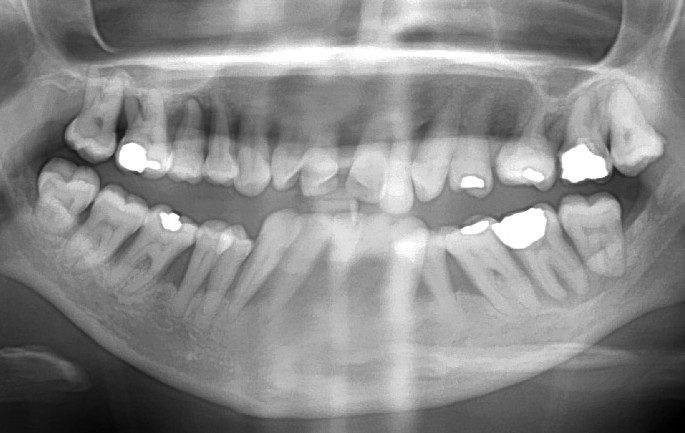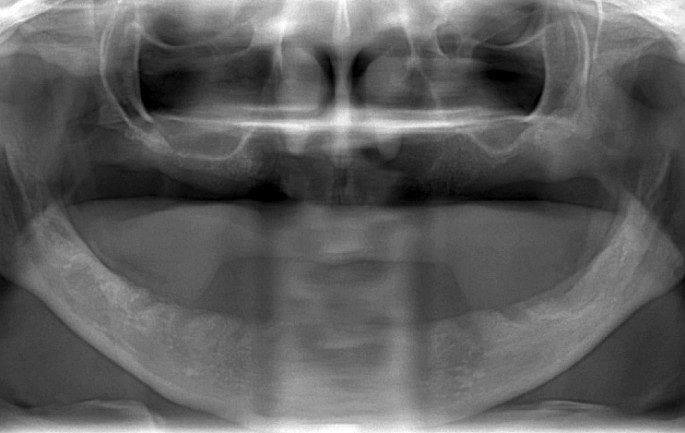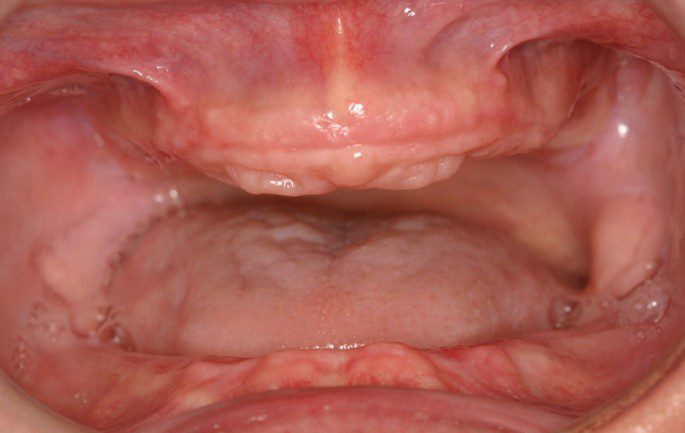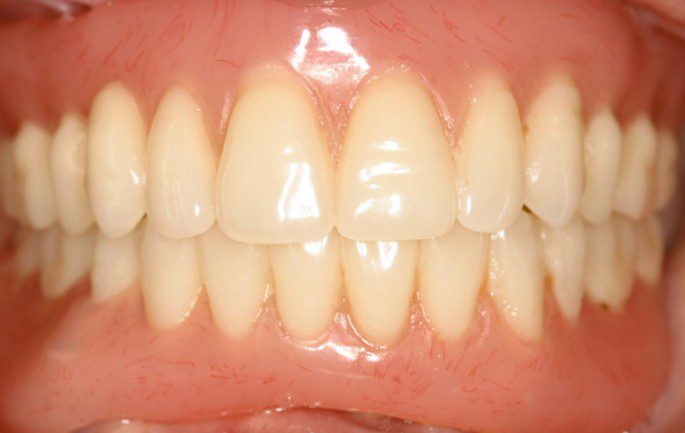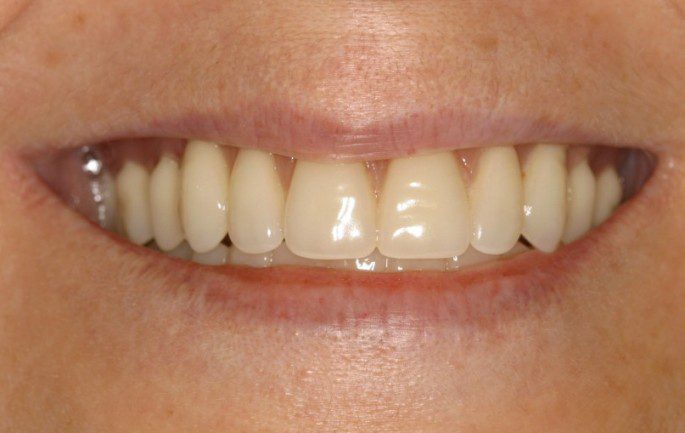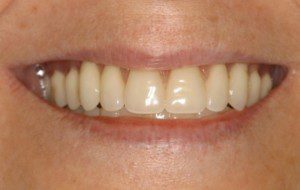
1 of 11
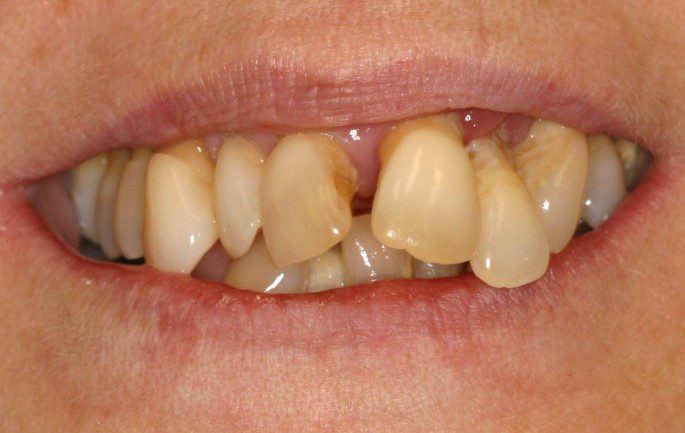
Some of the most profound dental makeovers we complete are for those patients who have had bad teeth for many decades. Some people delay due to time, fear or finances. Either a person wants a new personal or business start or one of the front teeth falls out which causes them to address their dental problems. This patient was planning to retire and wanted to finally fix her teeth. A genetic predisposition to gum disease (periodontal disease) combined with some oral hygiene neglect resulted in extreme bone loss.
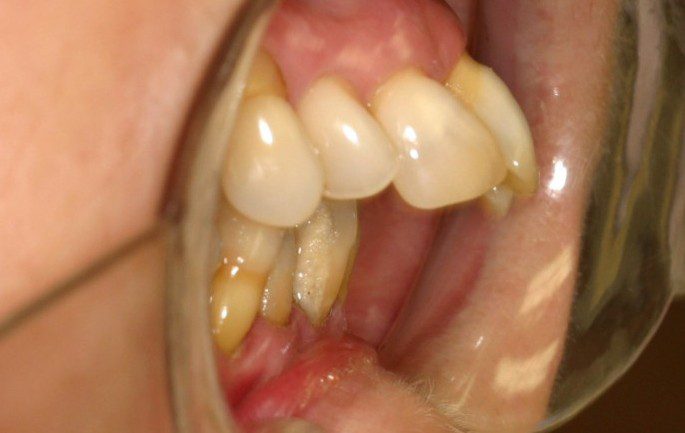
With extreme bone loss the teeth start to move. After approximately 50% of the bone is lost the teeth move quite easily. Pressure from the lower front teeth start to push the upper front teeth out (splaying). At this point, the esthetics begins to deteriorate very rapidly.
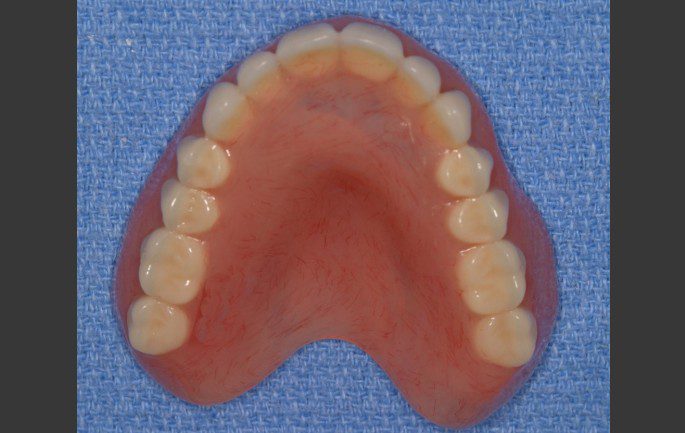
NO ONE EVER LEAVES THE OFFICE WITHOUT TEETH. Therefore, immediate temporary dentures are made, in advance of the appointment for tooth removal. Here, the upper immediate temporary denture is shown.
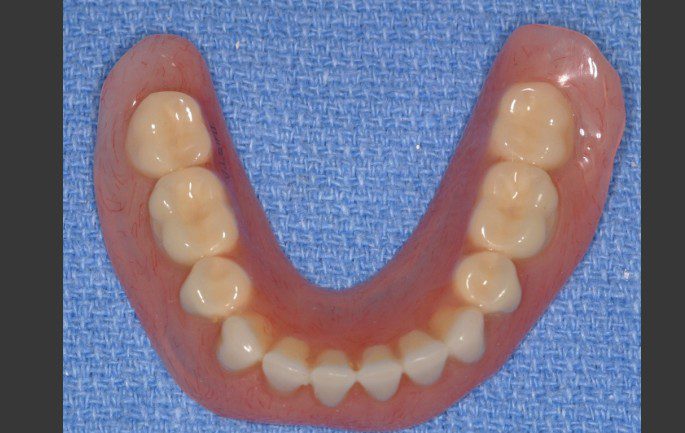
Lower immediate temporary denture. We use immediate temporary dentures because they serve as the prototype. Meaning, during the healing phase the dentures are evaluated for many criteria that may be changed in the fabrication process for the new, definitive complete dentures. Some evaluation points include: Tooth position, Tooth size, Tooth color, Bite, Vertical Dimension of Occlusion- how far apart the upper and lower jaws are when the teeth are together. To open inhibits chewing ability. Too closed causes patients to appear much older than their chronological age and can give people TMJ (jaw pain) symptoms.
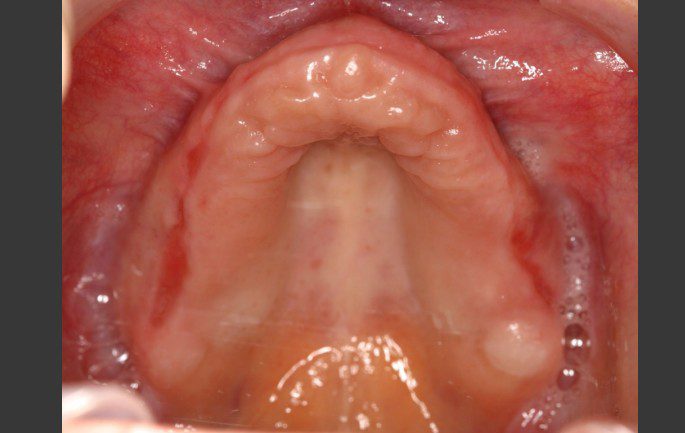
Mirror view of upper arch without teeth. Considering how much bone loss had occurred before extractions, this patient has pretty wide bone after healing. This amount should hold an upper denture fairly well.
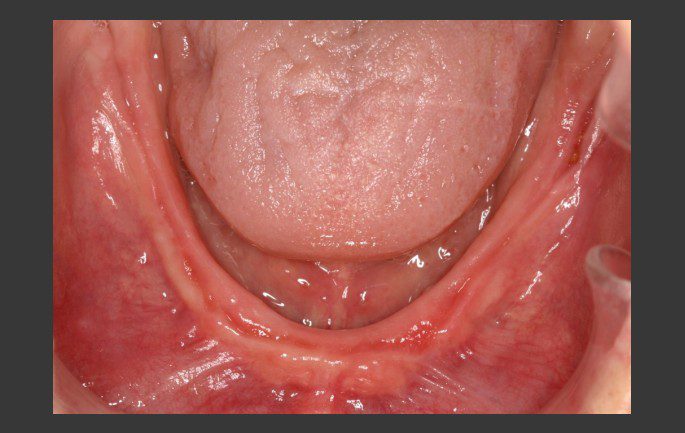
Mirror view, lower arch without teeth. The patient's bone is much thinner in the lower arch. Bone resorption patterns are different for all patients and, even varies between arches on the same patient. Typically, the lower arch has more bone than the upper arch. Implants are almost always possible in the lower arch. This bone resorption pattern is the most common cause for patients to seek dental implant treatment. With little bone to hold the denture from moving, sore spots, gum ulcers, reduced chewing ability and pain are common.

